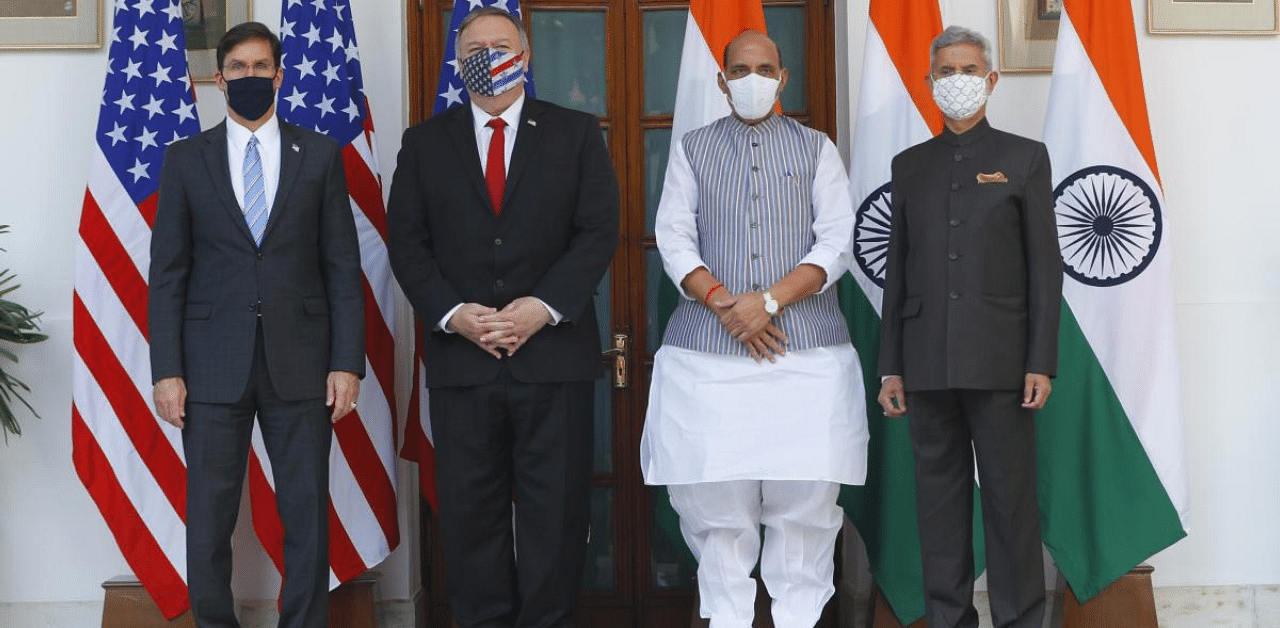
China’s aggressive moves along its disputed boundary with India and its belligerence elsewhere in the Indo-Pacific region was on the agenda as External Affairs Minister S Jaishankar and Defence Minister Rajnath Singh joined the US Secretary of State Mike Pompeo and Secretary of Defence Mark Esper for the 2+2 dialogue.
Pompeo said at the beginning of the meeting that the US had “a lot” to discuss with India, including ways to “confront” the “threat” posed by the Communist Party of China to “security and freedom” as well as “to promote peace and stability in the region”.
With the Indian Army resisting the aggressive moves by the Chinese People’s Liberation Army (PLA) along the Line of Actual Control (LAC) – the de facto boundary between the two nations – in eastern Ladakh, Jaishankar avoided directly referring to the communist country but did send out a subtle message to Xi Jinping’s regime in Beijing. He said that India and the US could make a real difference when it comes to promoting respect for the territorial integrity of the nations.
“At a time when it is particularly important to uphold a rules-based international order, the ability of India and the US to work closely in defence and foreign policy has a larger resonance,” said the External Affairs Minister Jaishankar. “Together, we can make a real difference when it comes to regional and global challenges, whether it is in respecting territorial integrity, promoting maritime domain awareness, countering terrorism or ensuring prosperity.”
The third India-US 2+2 dialogue was the last engagement between New Delhi and Donald Trump’s administration in Washington D.C. before the final day of voting for the presidential elections in America on November 3. What added to the significance of the India-US high-level talks was that it was held amid growing belligerence of China – not only along its disputed boundary with India but also in the South China Sea, East China Sea, Taiwan Strait and elsewhere in the region.
India and the US will sign the Basic Exchange and Cooperation Agreement (BECA) on the side-line of the bilateral 2+2 dialogue on Tuesday. The agreement will enable the exchange of geo-spatial information between the two countries, enhancing the operational efficiency of the US defence platforms being operated by India. The two sides, according to the sources, are also discussing an agreement on maritime domain awareness cooperation – a pact, which will institutionalise sharing of information bilaterally on potential sea-borne security threats and thus will help keep watch on the activities of the Chinese PLA Navy in Indo-Pacific region.
Pompeo and Esper had separate meetings with Jaishankar and Singh soon after arriving in New Delhi on Monday.
